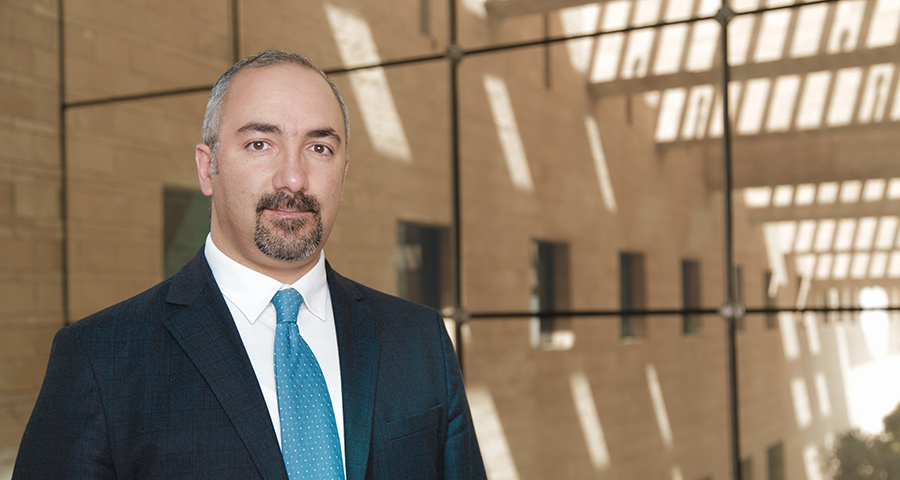
Smart about Smart Cities
By Chadi Aoun
With the opening of the Doha Metro, Qatar has taken an important step toward harnessing smart technology for the benefit of the wider community. The network, which is driverless and completely automated, is equipped with information systems that enable communication between vehicles and automated route control.
A technologically sophisticated transportation system is, for many, a defining feature of a ‘smart city.’ Transportation, however, is just one element. Smart cities touch on all aspects of society, from economy, to environment, housing, education, health care and community engagement. In my view, the most important aspect of successful smart cities is smart people.
From that perspective, a smart city should enable people to collaborate, innovate, and achieve more. It is not enough for technologies to simply do things for people. Technologies enable us, but they should not substitute what a community does for itself. It is about expanding our horizons, and not about limiting our options.
Truly smart cities allow for communities to grow and progress. Community members are critical stakeholders in envisioning and co-creating a smart future. This goes beyond depending on technology to solve current problems, to also enable communities to reach new developmental goals. Educational and research institutions are playing a crucial part in enabling a smart future through empowering new generations to inspire a collective vision and make it a reality.
Given the upcoming sustainability challenges, smart city initiatives are underway all over the world, and take different forms depending on communities’ needs. In Qatar, Tasmu is a smart futures initiative that is overseen by the Ministry of Transport and Communications. The Arabic word for “elevation,” Tasmu is expressly chosen to benefit the community. It aims “to drive the sustainable economic Agenda set forward by Qatar’s Vision 2030.”
Qatar is also investing in developing smart city infrastructure in Lusail, ‘Qatar’s Future City’, with an estimated capacity of 450,000 people. Along with this, Msheireb Downtown Doha – a mixed-used development in the heart of the capital – is also emerging as a leading downtown regeneration project. These initiatives aim to address a range of smart city pillars, including smart economy, smart living, and smart environment.
Elsewhere, different issues call for different smart solutions. In Japan, for example, there is a dearth of age care providers to serve an aging population. One solution that has been garnering attention is the deployment of robotics for home care, household maintenance and emergency management. The robots emulate human emotions and responses and are proving to be a useful asset for an aging population.
Nonetheless, ‘smart’ solutions do not have to be high-tech. For the past few years, my colleagues and I at Carnegie Mellon University in Qatar have organized sustainability trips to various global cities for our students. We travelled to Sydney, Australia, in 2017. Among the many initiatives we studied on that trip was Michael Mobbs’ townhouse. The townhouse is completely disconnected from the electricity, water, and sewerage grids. Its occupants live sustainably and utilize all the things many think of as waste. This is a townhouse in the middle of the city!
In 2018, we travelled to Singapore where smart living takes an entirely different form. Singapore is a tiny country with a large population, and relatively small living spaces. To avoid claustrophobia, Singapore has large, free public spaces for people to enjoy, and public transportation systems that are effectively interconnected. Information and communication technologies are interwoven into the fabric of these solutions, not as ends in themselves, but rather as means to meet community needs and aspirations. Students on our study trips brought back a wealth of knowledge and experiential learning. The technology is not ‘smart’ in and of itself, but rather becomes smart through judicious usage and social interaction. Education and innovation are the corner stones of smart cities. On our study trips, I instill in students my conviction that ‘the world is our classroom’, and emphasize to them the need for thinking globally and acting locally in a rapidly evolving world.
Ultimately, each community should be setting its own vision, and harnessing knowledge and information systems to achieve it. Each vision will be different according to circumstances, and these solutions will extend far beyond the basics of traffic flow. So, the next time you are traveling on the Doha Metro, take note that this is one part of a bigger vision, a future where the entire community benefits from thoughtful planning and the clever application of technology. Now it is our turn to extend our horizons and be smart in the choices we make on our collective journey.
Chadi Aoun is an associate teaching professor in information systems at Carnegie Mellon University in Qatar.
